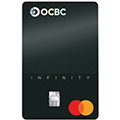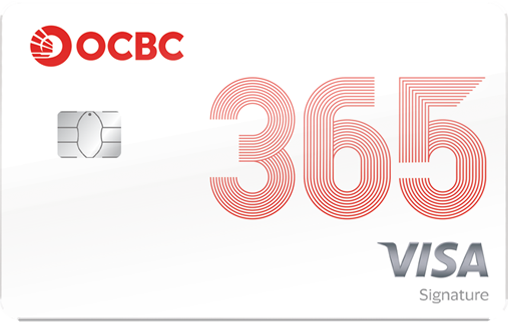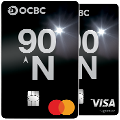Are the current volatile markets giving you investment jitters?
Are the current volatile markets giving you investment jitters?
How do you position your portfolio for richer, not poorer? Just like a good marriage, building a strong foundation for your investment portfolio can help you enjoy investment bliss over the years. Of course, you’ll need to make an effort to address weaknesses and capitalise on strengths in the nick of time.
The financial landscape in the first half of 2022 can be described as anything but uneventful.
Political conflict. Check. Roaring inflation? Check. Central bank policy pivot? Check. Rising recession concerns? Check.
In what appeared to be a continuous stream of events, investors had nowhere to hide, not even in Bitcoin, which was touted in 2021 as a strong hedge against inflation (Newsweek, 20 May 2022). The favourite of the cryptocurrency world lost over 50% of its value from an all-time high of over US$64,000 in 2021, to trade below US$30,000 in June 2022.
Here’s a recap of the markets
Among more traditional asset classes, the global equities benchmark – MSCI All Country World Total Return Index – slumped more than 19% in the first 6 months of the year. This was its weakest performance over the same 6-month period since the benchmark’s inception in 1987.
Bonds failed to offer shelter from economic uncertainty, with the global bond benchmark – the Bloomberg Global Aggregate Index – chalking a performance of -13.91% over 6 months, its worst since the inception of the index in 1989.
Now, wary of the post-pandemic economic aftershock creeping into corporate earnings, management at major corporations have turned cautious about their forward guidance as they prepare investors for slower revenue growth ahead.

For better and for worse…
The interesting thing is that 2022 was not expected to be this eventful. Sure, concerns about the economy (primarily stagflation) had been persistently red-flagged by analysts last year. Even the Federal Reserve (the Fed) eventually came around in December to change its long-held view on inflation as “transitory” to telegraph that multiple rate hikes were going to take place in 2022.
But it was just in May that Chairman Jerome Powell had stated that the central bank was “not actively considering a rate hike of three-quarters of a percentage point at coming monetary policy meetings,” only to walk back that statement a month later in the face of inflationary complications.
If members of one of the most influential financial institutions in the world can be caught off guard by how fast market events transpired this year, what hope is there for lesser mortals?
The fairly strong rebound in investment markets since mid-June has left some wondering if the worst is over. At the time of writing, global equities were up by about 11% from the low in June, the S&P 500 index was up 12% and even global bonds were up 4%.
Investors can be forgiven for thinking that there is a mismatch between what the Fed and the US Treasury market are saying and the performance of the markets. The persistently inverted US Treasury yield curve is flashing warnings of a recession while Fed officials warn that they are far from done with rate hikes.
“What should I do in the face of broad market uncertainty?” “Should I brace my portfolio for continued inflation, looming stagflation or an imminent recession?”
These may be some of the questions you could be asking now. And we just may have the answers.

To have and to hold
The basic premise of an investment portfolio is that it should never remain static. Ensure that you don’t lose touch with what is happening in markets. This way, you can turn market inflictions into opportunities.
Making adjustments as market conditions turn helps to make your portfolio more resilient over time across your various life stages. As you improve on the appropriate mix of investment assets, ensure that you have sufficient liquidity to take advantage of new opportunities to diversify but remain aligned with your risk tolerance and investment goals.
For instance, inflation is not likely to go away anytime soon, but prolonged inflation can erode your returns.
In the current environment, a defensive strategy across bonds and equities remains appropriate. We believe that expectations for a dovish Fed pivot which drove the rebound in equity markets in July-early August period are somewhat overdone.
Bonds
Bonds provide a regular stream of income in both the good times and bad. Among the various global credit categories, Developed Market Investment Grade (DM IG) bonds have the highest rated credit and lowest volatility.
In the event of a potential recession, we expect DM IG bonds to outperform DM High Yield and Emerging Market bonds in a flight to quality pivot.
Equities
You will still need to hold some quality equities in your portfolio to prepare for the eventual rebound.
Investing in blue-chip stocks and diversifying across sectors and countries will help to serve as a buffer as not all economies and sectors will suffer the same fate in an economic downturn. But be selective and be mindful about picking good quality, income stocks.
From a global perspective, we favour the Healthcare and Utilities sectors over more cyclical ones as we advocate for a more defensive tilt in portfolios.
Despite the recent volatility in Chinese equities, we continue to favour the space and see favourable long-term risk-reward at current valuations. We believe that China will avoid outright recession, albeit with a lower forecast for growth this year, given the contraction suffered in 2Q2022 when Shanghai and other cities closed. That said, the path of the economy will be bumpy.
At the time of writing, valuations of HK and Chinese equities remain undemanding at forward price-to-earnings multiples of 10.5 times for MSCI China Index (offshore China equities) and 9.3 times for Hang Seng Index, implying an 8% – 11% discount to their long-term average levels.
Precious metals
It is also prudent to allocate some investment to gold, to help with portfolio diversification. The metal is frequently used as a hedge against inflation and uncertainty. Gold prices came off a one-month high in early August but we believe prices could see some upside against the backdrop of slowing growth, rising recession risks, and the possibility of the Fed slowing the pace of tightening later in the year.
A perfect pair
Getting exposure to these strategies is simple with OCBC Digital. The app has many features that can help you manage, safeguard and grow your wealth.
- Manage
You can create savings goals that help ring-fence a portion of your monthly income to fund these goals. You can also make use of the Money Insights tool to get tips on how you can manage your wealth better. - Safeguard
You can purchase protection and endowment plans to address your various insurance needs. - Grow
Explore various types of investments from one convenient place - OCBC Digital.
What you can invest in
- Unit trusts: Benefit from active management by experienced fund managers, whose focus, skill and resources are important assets amid challenging markets.
- Blue Chip Investment Plan (BCIP): Access blue chip shares and Singapore-listed exchange-traded funds (ETF) across a broad range of sectors, including financials, utilities and consumer goods. You can change your counter selection or investment amount and sell units with ease.
- RoboInvest: Sometimes, it’s even easier if a robot does it for you. Robo-advisors offer a disciplined approach to investing that runs on autopilot. Smart portfolio rebalancing updates also mean you can save time on performance tracking and get alerted on rebalancing opportunities as the market changes. This is especially useful in navigating rocky markets. Choose from 37 portfolios grouped by focused themes and risk profiles in a simple, one-glance view.
- Precious Metals: Instead of buying physical gold bars, go paperless. Issued paper bullion holds the same value as physical gold and silver. No custody or storage fees will be incurred.

Still undecided?
Here are some suggestions you can consider on the OCBC Digital app:
Unit trusts
- Allianz Global Floating Rate Notes Plus
This fund is suitable for investors looking to invest in this rising rate environment. It aims to capture income from a diversified global universe of floating-rate notes. - Fidelity Funds - Global Dividend
This is a well-diversified, unconstrained portfolio that seeks to deliver income, growth and stability by investing in quality global stocks. Its defensive exposure provides resiliency during a turbulent market environment. - FSSA Dividend Advantage Fund
This diversified portfolio of Asia ex-Japan companies delivers high-quality dividend yields, strong dividend growth prospects and long-term capital appreciation potential.
RoboInvest
- Cautious and Balanced Portfolios
Globally diversified across bonds, equities and gold. - Dogs of the Dow
Blue chips with relatively high dividend yields that are diversified across sectors. - Stable US Consumer Giants
Mega cap consumer stocks which are relatively less prone to growth/inflation shocks.
Blue Chip Investment Plan (BCIP)
We remain positive on the Singapore market, which has largely outperformed on the back of several core sectors which are less impacted by high raw material and input costs. Valuations are not expensive and fall below 10-year historical averages. Sectors that are likely to perform relatively better in this environment include Consumer Discretionary, Industrials, Real Estate and Financials.
Within equities, we also see long-term value emerging in China equities.
Important notices
Start your investment journey with OCBC today
through OCBC Online Banking or visit us at a
branch to open an account immediately.
General disclaimer
This advertisement has not been reviewed by the Monetary Authority of Singapore.
1. Any opinions or views of third parties expressed in this document are those of the third parties identified, and do not represent views of Oversea-Chinese Banking Corporation Limited (“OCBC Bank”, “us”, “we” or “our”).
2. This information is intended for general circulation and / or discussion purposes only. It does not consider the specific investment objectives, financial situation or needs of any particular person.
3. Before you make an investment, please seek advice from your Relationship Manager regarding the suitability of any investment product taking into account your specific investment objectives, financial situation or particular needs.
4. If you choose not to do so, you should consider if the investment product is suitable for you, and conduct your own assessments and due diligence on the investment product.
5. We are not making an offer, solicit to buy or sell or subscribe for any security or financial instrument, enter into any transaction or participate in any trading or investment strategy with you through this document. Nothing in this document shall be deemed as an offer or solicitation to buy or sell or subscribe for any security or financial instrument or to enter into any transaction or to participate in any particular trading or investment strategy.
6. No representation or warranty whatsoever in respect of any information provided herein is given by OCBC Bank and it should not be relied upon as such. OCBC Bank does not undertake an obligation to update the information or to correct any inaccuracy that may become apparent at a later time. All information presented is subject to change without notice.
7. OCBC Bank shall not be responsible or liable for any loss or damage whatsoever arising directly or indirectly howsoever in connection with or as a result of any person acting on any information provided herein.
8. Investments are subject to investment risks, including the possible loss of the principal amount invested. The information provided herein may contain projections or other forward-looking statements regarding future events or future performance of countries, assets, markets or companies. Actual events or results may differ materially. Past performance figures, predictions or projections are not necessarily indicative of future or likely performance.
9. Any reference to a company, financial product or asset class is used for illustrative purposes and does not represent our recommendation in any way.
10. The information in and contents of this document may not be reproduced or disseminated in whole or in part without the Bank’s written consent.
11. OCBC Bank, its related companies, and their respective directors and/or employees (collectively “Related Persons”) may, or might have in the future, interests in the investment products or the issuers mentioned herein. Such interests include effecting transactions in such investment products, and providing broking, investment banking and other financial services to such issuers. OCBC Bank and its Related Persons may also be related to, and receive fees from, providers of such investment products.
12. You must read the Offer Document/Indicative Term Sheet/Product Highlight Sheet before deciding whether or not to purchase the investment product, copies of which may be obtained from your relationship manager.
13. Any hyperlink to any third party article, or other website or webpage (including any websites or webpages owned, operated and maintained by third parties) is for informational purposes only and for your convenience only and is not an endorsement or verification of any such article, website or webpage by OCBC Bank and should only be accessed at your own risk. OCBC Bank does not review the contents of any such articles, website or webpage, and shall not be liable to any person for the same.
14. There are links or hyperlinks which link you to websites of other third parties (the “Third Parties”). OCBC Bank hereby disclaims liability for any information, materials, products or services posted or offered on the website of the Third Parties.
Collective Investment Schemes
1. A copy of the prospectus of each fund is available and may be obtained from the fund manager or any of its approved distributors. Potential investors should read the prospectus for details on the relevant fund before deciding whether to subscribe for, or purchase units in the fund.
2. The value of the units in the funds and the income accruing to the units, if any, may fall or rise. Please refer to the prospectus of the relevant fund for the name of the fund manager and the investment objectives of the fund.
3. Investment involves risks. Past performance figures do not reflect future performance.
4. Any reference to a company, financial product or asset class is used for illustrative purposes and does not represent our recommendation in any way.
For funds that are listed on an approved exchange, investors cannot redeem their units of those funds with the manager, or may only redeem units with the manager under certain specified conditions. The listing of the units of those funds on any approved exchange does not guarantee a liquid market for the units.
Global Equities disclaimer
- Dividend growth is not guaranteed, nor are companies in which you invest obliged to pay dividends;
- Companies may go bankrupt rendering the original investment valueless;
- Equity markets may decline in value;
- Corporate earnings and financial markets may be volatile;
- If there is no recognised market for equities, then these may be difficult to sell and accurate information about their value may be hard to obtain;
- Smaller company investments may be difficult to sell if there is little liquidity in the market for such equities and there may be substantial differences between the buying price and the selling price;
- Equities on overseas markets may involve different risks to equities issued in Singapore;
- With regards to investments in overseas companies, foreign exchange rates may move in an unfavourable direction affecting adversely the valuation of investments in base currency terms.









